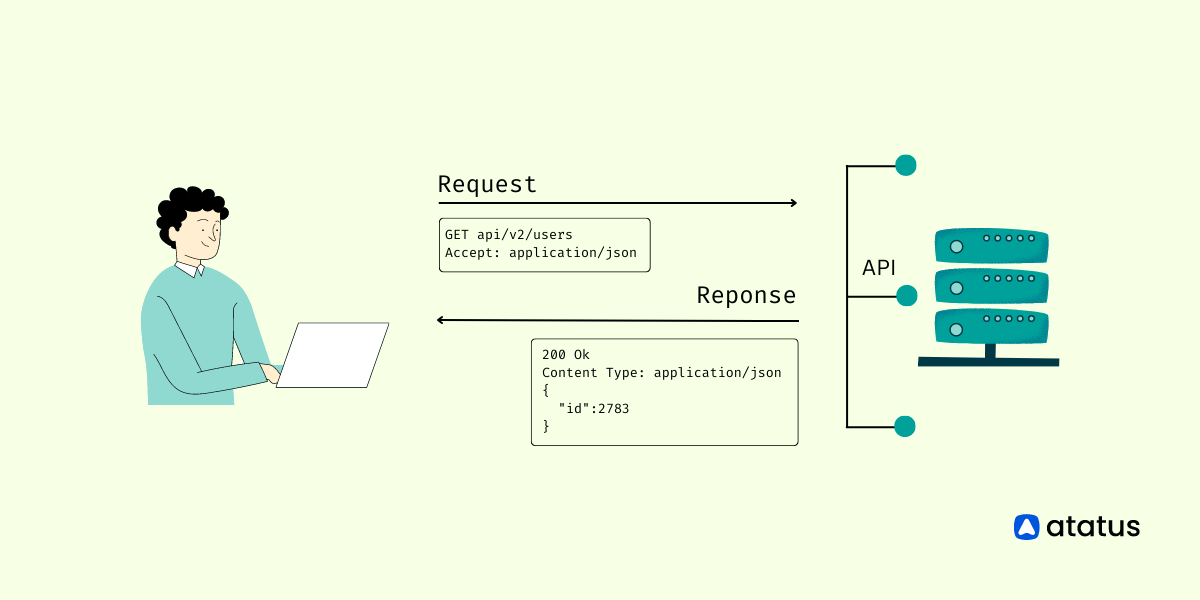A Beginner's Guide to Structured Logging
Structured logging is a methodical approach to log management in software development, often utilizing JSON or key-value pairs. This method enhances the comprehensibility and analytical efficiency of log data, particularly in complex and distributed system environments.
Unlike unstructured logs, which lack a defined format, structured logs adhere to a standardized layout, facilitating streamlined analysis and troubleshooting.
In the realm of logging, distinctions exist among structured, unstructured, and semi-structured logs. Structured logs conform to a fixed one similar to organized databases, providing a coherent framework for systematic analysis.
Unstructured logs lack a predefined format, rendering extraction of specific details challenging. Semi-structured logs strike a balance, incorporating organized elements while allowing flexibility for additional contextual information.
Structured logging is important for several reasons. Firstly, it optimizes system performance by standardizing log entries, preventing processing inefficiencies and expediting issue identification.
Consistency in log formatting goes beyond mere searchability, fostering seamless log analysis and comparison.
Additionally, structured logs offer machine readability, enabling automated processing and integration with log management systems and analytics tools. The interoperability of structured logs across diverse systems and tools further underscores their significance in facilitating cohesive integration within broader software ecosystems.
Ultimately, structured logging contributes to efficient performance monitoring, system optimization, and collaborative synergy between development and operations teams.
Lets get started!
Table of Contents
- What is Structured Logging?
- Structured, Unstructured, and Semi-Structured Logs
- Why is Structured Logging Needed?
- Structured Logging example
- Best Practices for Structured Logging
- Common Pitfalls to Avoid in Structured Logging
- Structured Logging for Security and Compliance
What is Structured Logging?
Structured logging refers to a method of recording log messages in a systematic and standardized format. It involves organizing log data in a structured manner, typically using a predefined format such as JSON or key-value pairs.
This approach makes it easier to read and understand log entries, facilitating more efficient analysis and troubleshooting for developers and system administrators.
Structured logging provides a clear and organized way to capture information about events or messages generated by a computer system.
By using a consistent format, such as JSON, each log entry contains well-defined fields that convey specific details about the event, making it easier to extract relevant information.
Structured logging is particularly valuable in complex systems or distributed environments where multiple components may generate logs.
Structured logging enhances the readability and interpretability of log data by organizing it in a standardized format, facilitating more effective analysis and troubleshooting in software development and system administration.
Structured, Unstructured, and Semi-Structured Logs
Structured logs are like well-organized data tables where each entry follows a specific format, making it easy to find and analyse information. For instance, a log entry might include time, event type, and user, neatly organized. This structured format aids in efficient data processing.
On the other hand, unstructured logs lack a fixed format; they're more like free-flowing paragraphs. Extracting specific details from these logs can be challenging since there's no set structure. It's similar to searching for information in a story without clear sections.

Semi-structured logs strike a balance. They have some organized sections, like time and event type, but also allow for more flexible, free-form information. It's a mix of structured order and the adaptability of unstructured data. Think of it as having some parts neatly labelled and others where you can jot down additional notes.
In a nutshell, Structured logs follow a fixed format for systematic analysis, similar to a well-organized database. Unstructured logs lack a set structure, posing challenges for specific data extraction. Semi-structured logs strike a balance, incorporating organized elements while allowing flexibility.
Why is Structured Logging Needed?
Structured logging is a practice in software development that involves organizing log entries in a systematic and well-defined format. Unlike traditional plain-text logs, structured logging presents data in a consistent and machine-readable manner.
This structured logging offers numerous advantages, including improved searchability, ease of analysis, and enhanced collaboration between development and operations teams.
Let's examine several significant advantages and understand why structured logging is absolutely essential.
- Performance : Optimizing performance is crucial as your application scales. Efficient log management is essential, especially when dealing with a growing number of non-standardized logs from various sources. Standardizing logs prevents wasted processing power and ensures timely identification of potential issues, saving valuable time for your software teams.
- Consistency : Consistency in log formatting extends beyond searchability, playing a crucial role in facilitating analysis and comparison. A uniform structure simplifies the process of assessing and contrasting logs, preventing complications arising from variations like differently formatted timestamps or field names. This ensures a seamless evaluation of different aspects of your application, enhancing overall functionality assessment.
- Machine Readability: The structured logs facilitates automated processing by machines, enabling seamless integration with log management systems and analytics tools. This machine readability streamlines the extraction of meaningful insights from log data without the need for complex parsing mechanisms.
- Interoperability: Structured logs are often more interoperable across different systems and tools. They can be easily consumed by log management systems, monitoring tools, and other analytics platforms, enabling seamless integration into a broader ecosystem of software and services.
- Performance Monitoring: Structured logs can include performance-related metrics and timings. This information is valuable for monitoring system performance, identifying bottlenecks, and optimizing the overall efficiency of a system.
As your application grows, standardized logs become crucial for optimizing performance, ensuring efficient log management, and saving valuable time in issue identification.
Consistency in log formatting is key, preventing complications and allowing seamless evaluation of different application aspects.
Ultimately, the machine readability and interoperability of structured logging contribute to effective performance monitoring and system optimization.
Structured Logging example
Let's consider an example to illustrate the concept of structured logging:
Unstructured Log:
[warn] [Monday, 03-Apr-23 14:45:30 UTC] Connection timeout detected. Please investigate.
While this log message provides information about a connection timeout, it lacks structured details that could aid automated analysis.
Structured Log:
{
"timestamp": "Monday, 03-Apr-23 14:45:30 UTC",
"level": "warn",
"message": "Connection timeout detected. Please investigate.",
"event": {
"type": "timeout",
"severity": "warning",
"details": {
"connection": "server-123",
"timeout_duration": "30 seconds",
"client_ip": "192.168.1.100"
}
}
}
In this structured logging,
- The
timestampfield indicates when the event occurred. - The
levelfield signifies the log level (warning in this case). - The
messagefield contains a human-readable description of the event.
The event field is a key-value pair that provides additional structured information:
- The
typefield specifies the type of event (timeout). - The
severityfield denotes the severity of the event (warning). - The
detailsfield contains specific information about the event, such as the connection ID, timeout duration, and client IP.
Structured logging, like the example provided, enables automated systems to easily extract and analyze relevant information.
For instance, one could query for all warning-level events, filter by event type, or identify patterns related to specific connections or IP addresses. This structured approach enhances the efficiency of log analysis and aids in troubleshooting and monitoring systems.
Best Practices for Structured Logging
Structured logging involves recording data in a structured manner, often using key-value pairs, JSON, or other defined data structures. Adopting this approach facilitates easier log data search, analysis, and correlation. Consider the following best practices for structured logging.
- Establish a standardized log format for your entire system or application. Consistency in formatting simplifies log parsing and analysis.
- Ensure that crucial details like timestamps, log levels, and unique identifiers are logged. Additionally, include contextual information to aid troubleshooting and comprehension of log entries.
- Employ correlation IDs to link related log entries across different components or services, facilitating the tracing of requests or transactions through the system.
- Include timestamps in each log entry, ensuring a consistent format that includes both date and time information.
- Refrain from logging sensitive information such as passwords or personal data. If necessary, apply techniques like masking or encryption to safeguard sensitive data in logs.
- Set up log rotation and retention policies to manage log file sizes and prevent them from consuming excessive disk space.
- Include relevant error details in logs when errors occur. This encompasses the error message, stack trace, and any other information conducive to diagnosing and resolving issues.
Following these guidelines helps you create organized logs that make debugging, monitoring, and analysing your applications or systems more effective, all while avoiding any issues with original content.
Common Pitfalls to Avoid in Structured Logging
Structured logging is a valuable practice for enhancing the traceability and troubleshooting capabilities of software systems, but it comes with several common pitfalls that must be navigated carefully.
Firstly, it's crucial to manage log verbosity judiciously to avoid overwhelming administrators and causing performance degradation. Striking a balance in log levels, tailored to different components and scenarios, is essential to provide sufficient information for debugging without generating an excessive volume of logs.
Another critical aspect is maintaining consistency in log formats throughout the application. Inconsistent formats can hinder automated parsing and analysis, making it challenging to create robust log parsing tools. Establishing and adhering to a standardized log format across the system promotes uniformity, reducing the cognitive load on developers and facilitating efficient log processing.
Furthermore, neglecting context enrichment can limit the utility of logs during debugging and analysis. Including relevant metadata, such as timestamps, transaction IDs, and user context, enhances the comprehensibility and traceability of logs.
Failing to capture essential context may result in difficulties reconstructing the sequence of events during troubleshooting. Additionally, overlooking security considerations, especially when dealing with personally identifiable information (PII) and sensitive data, can expose systems to potential breaches and regulatory non-compliance.
Structured Logging for Security and Compliance
Structured logging is a critical component in maintaining an organization's security posture and ensuring compliance with regulatory standards. By employing a systematic and standardized approach to log management, structured logging enhances the clarity and organization of recorded information.
This method involves consistently utilizing predefined keywords, such as "timestamp," "event_type," and "user_id," throughout log entries.
The structured format of logging proves invaluable in the identification of security incidents and potential compliance violations.
Key elements like "source_ip," "request_method," and "response_code" provide essential context for analysing logs and investigating security events. Compliance requirements often mandate the inclusion of specific details, and structured logging ensures that these criteria are consistently met.
This meticulous recording of information facilitates easier auditing processes, demonstrating adherence to regulatory frameworks.
Furthermore, structured logging supports automation in security and compliance workflows. Automated tools can efficiently parse and analyse logs, enabling real-time threat detection and swift incident response.
The systematic use of keywords in structured logs not only aids in automation but also streamlines the overall log management process. In essence, structured logging emerges as a powerful tool for organizations seeking to enhance their security resilience, meet compliance obligations, and streamline the analysis of critical log data.
Conclusion
Structured logging emerges as an indispensable practice in contemporary software development and system administration. Its systematic organization of log entries, exemplified through predefined formats like JSON or key-value pairs, offers a robust framework for efficient analysis and troubleshooting.
The clear advantages of structured logging, including enhanced searchability, performance optimization, and machine readability, underscore its pivotal role in the ever-evolving landscape of complex and distributed computing environments.
By adhering to best practices such as standardized log formats, inclusion of essential details, and prudent management of sensitive information, structured logging not only streamlines debugging and monitoring but also fosters a collaborative and interoperable approach across diverse software tools and systems.
As technology advances, the implementation of structured logging stands as a foundational element in ensuring the reliability, performance, and seamless operation of modern software applications.
Implying Atatus for Log Monitoring
With the Atatus Logs Monitoring platform's cost-effective, scalable approach to centralized logging, you can gain complete visibility across your entire architecture. All log data is processed in one place and can be visualized.
All high-priority incidents are reported immediately by endowing Atatus. Using error logs, custom queries, or trigger conditions, you can configure advanced alerts.
Depending on your log analysis, you may receive notifications of certain events. Logging events and slow traces can be correlated with APM errors and slow traces to simplify troubleshooting. Discover more and resolve problems faster.
Analyze, search, and filter your logs on the fly in your production environment to troubleshoot problems. From a single interface, tail across systems similar to "tail -f".
Atatus offers a free 14-day trial to streamline your log management!
#1 Solution for Logs, Traces & Metrics
APM
Kubernetes
Logs
Synthetics
RUM
Serverless
Security
More





